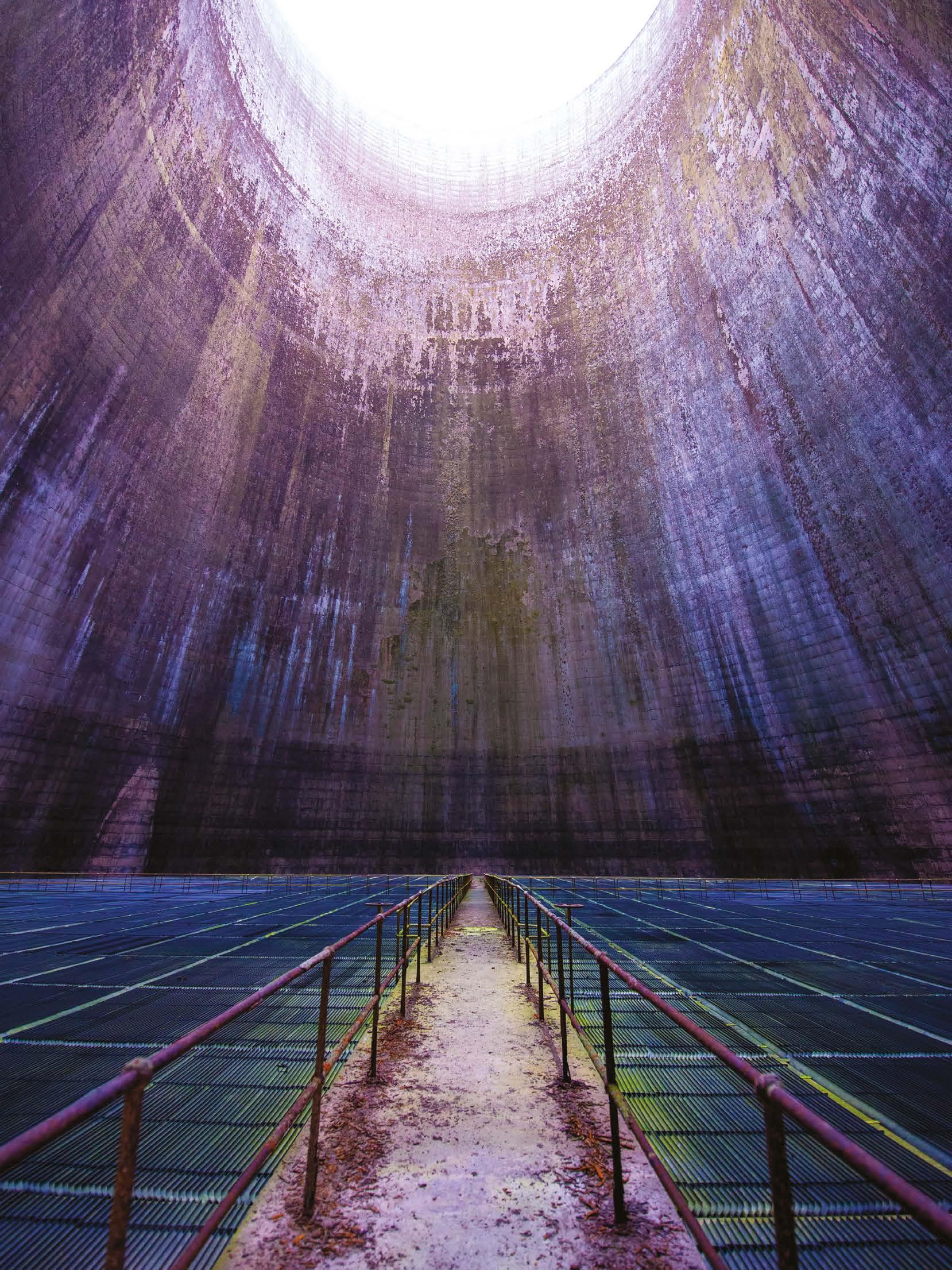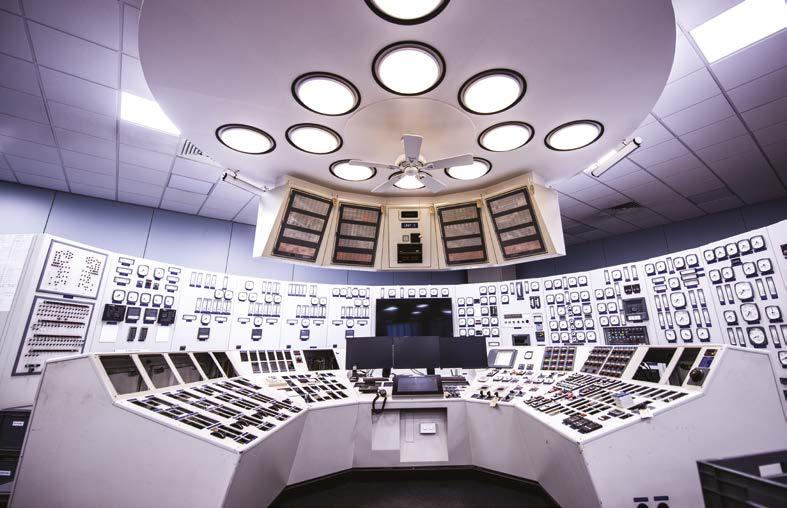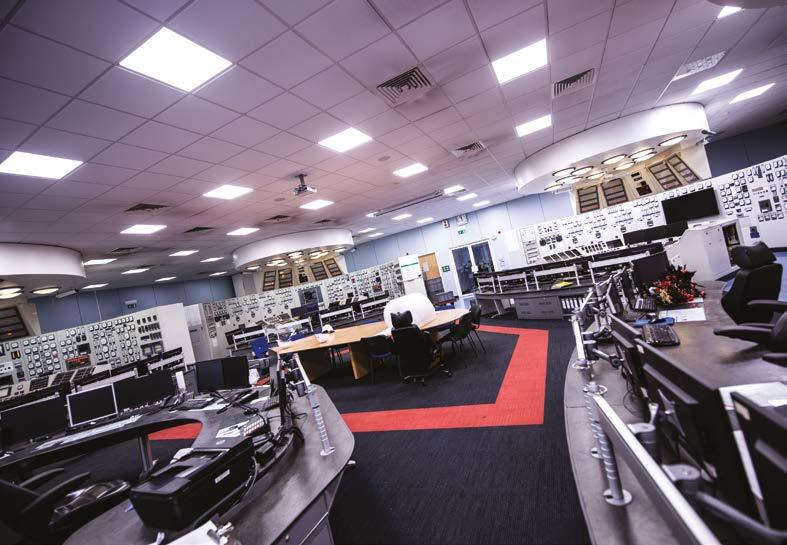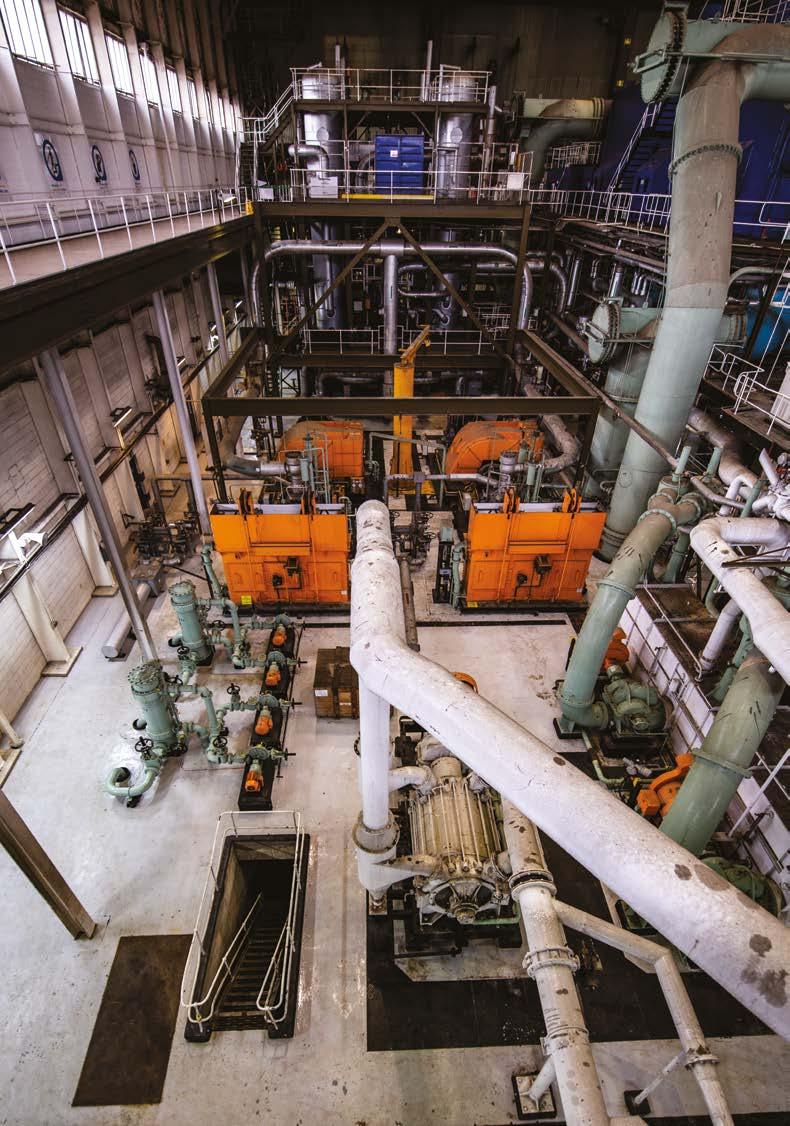
7 minute read
The Era Ends
As one of the major power generating sources in our region closes, Made visits and meets with EDF to find out more about this beacon on North Notts skyline now that the station has closed.
You can see the huge concrete towers of Cottam Power Station for miles, but nothing quite prepares you for just how huge these structures are when you’re stood within inches of them.

Cottam Power Station has eight of these huge 114 metre (375ft) cooling towers, each one designed to cool down steam before it is let back out into the atmosphere.
Made had the opportunity to get up close to these towers during a tour of the site recently. The visit came just a few months after the power station’s owner, EDF, announced it was stopping production at the site. The power station has stood on the local skyline of the Trent Valley for over 50 years (it was originally designed to operate for just 30), providing three per cent of the UK’s energy demand.
Driving towards the power station, the only real visible clue that it is no longer in operation is the lack of steam coming from the cooling towers. We drove down the long entrance to the site, and after clearing the security measures, which included watching a short health and safety video about our visit, we were introduced to site manager Steve Hoad.

The site was built on the back of a major government programme to build power stations to meet the steady increase in demand for electricity driven by the post-war manufacturing boom. In fact, after 1945, energy demand rose by a steady 10 gigawatts every decade. Other power stations built as part of the government programme included West Burton A, Ratcliffe, and Didcott in Oxfordshire.
Steve explains the location for the power station was key. It was built alongside the River Trent for the water source, grid connection and nearby fuel supply, namely coal. Coal would be brought in from neighbouring mines via a special rail line that took the loads right into the site.
After donning full body safety gear, including steel toe-capped boots, hard hats and goggles, we made our way into the vast building that houses the station's huge turbines. When in operation, these turbines would have made quite a noise, but today the vast building was silent, apart from the steady whirring of someone cleaning the floor nearby. Other than that you can hear a pin drop. This building is essentially the engine of the whole power station. Each of these turbines was capable of generating 500 megawatts of electricity.

Covering a total of 249 hectares, the 2000 megawatt power station began producing electricity in 1968. During the 1960/70s, between 800 and 900 staff, mainly local people, worked at the site, reducing only during privatisation in the 1990s when the number dropped to around 250.
The site itself has remained largely unchanged since it was first built, although there have been some significant changes with the introduction of a flue-gas desulphurisation plant between 2003 and 2007 at a cost of £110m and Steve says this enabled the station to comply with the large combustion plant directive and this helped the power station remove 98 per cent of its sulphur emissions.
“When Cottam commenced generation in 1968 it’s 2GW capacity meant that it could power approx. 3.7 million homes. Originally planned to operate for 30 years, it’s 52 year operating life is testament to the state of the art design and build of the station. Throughout its history Cottam has been an important part of the electricity network in the UK producing nearly 500TW hours of electricity over its lifetime, enough to power the entire of the UK for around 18 months,” Steve explains.
Fact File
Cottam Power Station Sunday 09 June 1968 – Monday 30 September 2019
A few notable facts as of August 2019:
• Cottam coal-fired power station was commissioned in 1968 by the Central Electricity Generating Board and has a generating capacity of 2,000 megawatts.
• Total electricity generated – 484 TWh
• Coal burn 183,000,000 Te equivalent to 915,000 blue whales, the heaviest animal on earth
• Number of trains – 150,000 this number would stretch round the world 1.5 times • At times of base-loading, the station consumption of coal, assuming 100% load factor, is 18,594 tonnes per day, or 5,080,235 tonnes per year,
• Total Hours running – 1,099,000
• Start-ups – 13,145
• The cooling towers are 375ft high. One cooling tower is taller than Big Ben, all eight cooling towers stacked on top of each other would be bigger that the world’s tallest building – The Burj Khalifa in Dubai and 3 x bigger than The Shard, the UK’s tallest building
• 6.5 million gallons of water go through one cooling tower per hour when the station is at full load, equivalent to the amount of water in 9 Olympic swimming pools
• Cottam is capable of generating enough electricity for approximately 3.7 million UK homes.
• The plant has been in operation for over half a century now, despite only being originally designed to operate for 30 years.
• 9th June 2018 the Station marked 50 years of Generation.
• 19th June 2019 the site welcomed the last train to Cottam
• 2015 onwards £40k was raised and donated to the following charities: Air Ambulance, Help for Heroes, LIVES and Bassetlaw Hospice through Safety Behaviour Recognition conversations.
• There are 46 station bikes
• There have been 14 Station Directors
• The whole site is 348 hectares, equivalent to 249 football pitches, with the operational site 228 hectares
The power station is currently being decommissioned and the whole process is expected to take until Christmas. Work currently being carried out includes making the electric components safe for contractors to continue. We made our way to the area that houses the boiler. The boiler itself is, again, huge, suspended from the ceiling, it drops down some 168ft and expands as it warms up.
To run the power station at its height required a range of highly skilled people, and as Steve points out, there were plenty of different roles available
“Whatever career you wanted you could get it here. It’s mainly engineering, mechanical; electrical; control instrumentation; computer science; operation engineers. Admin staff, management positions. Lots of roles.”
Full training, including apprenticeships, HNDs and degrees were also provided – it was about creating the best possible group of people to run this huge operation.
The main control room was the next port of call for us. The room and its controls are very much from the 1960s – lots of dials and instruments, but all crucial to ensuring the power station runs smoothly, efficiently and safely. There are four control desks here, all identical. The dials made it easier for the operators to see at a glance, readings that were critical, such as some pressure and vibration levels. Steve tells us that one of the control desks will be heading to the British Science Museum once decommissioning is complete.
We headed out towards the cooling towers next. These huge structures loomed above us as we approached, giving you a real sense of how tall they are. You could hear water dripping at the tower’s foot. This water, when the power station was in operation, would be cooled down by these towers.
To get into the tower we had to climb up around 100 steps along a dog-legged staircase, which took us to a small door about 20 metres up. Once inside the view straight up was extraordinary. Through the centre running along the floor was a walkway, about three or four feet wide. We were able to walk along the middle to the other side.
The decommissioning process will be complete in about 12 months when the demolition commences and will eventually see the towers and chimneys demolished. Until then, the site will continue to be seen for miles around as a reminder of the part Cottam had to play in providing the country with electricity for half a century.








